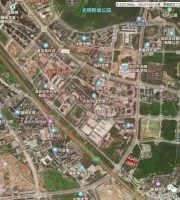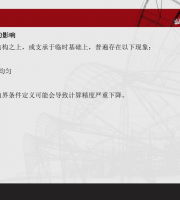05 causes of transverse cracks in asphalt surface course: 1
. 
01 causes of asphalt surface segregation: 1
.
Soil spilled on the road during central partition filling or greening project, resulting in road pollution; 4
.
During the construction of side slope, top pressing and isolation fence, when the central partition is brought back for filling or greening project, it is necessary to pad colored strips on the surface of asphalt pavement for isolation; 3
.
2
.
02 causes of unqualified compactness of asphalt surface: 1
.
Treat the base course, take anti cracking measures to reduce the transverse cracks of the base course; 2
.
The voidage of Marshall test is too large or too small; 2
.
The cracking of base course reflects to asphalt surface course; 2
.
Prevention measures: 1
.
The thickness of loose paving was not adjusted according to the daily test results during construction; 3
.
Prevention and control measures: 1
.
Strictly carry out the asphalt Marshall test to ensure the accuracy of Marshall standard density
.
03 causes of unqualified voidage of asphalt pavement: 1
.
Strictly control the compactness
.
When transporting and loading, the material should be loaded at least three times to avoid forming a cone to make the coarse material fall to the bottom of the cone; 4
.
Excavate a certain width of base on both sides of cracks, Reinforced concrete with a thickness of not less than 20cm is used to level the base course, which is paved with glass fiber mesh, and then paved with asphalt surface
.
Adjust the paver to the best state, the opening of the material door in front of the ironing plate should adapt to the maximum particle size of the aggregate, and the thickness of the mixture on the screw distributor should be adjusted The height should be basically the same, and the material level should be more than 2 / 3 higher than the spiral distributor; 5
.
Adjust the working state of paver and leveling device; 3
.
Control of too low rolling temperature; 1
.
06 causes of longitudinal cracks in asphalt surface course: 1
.
Select the roller that meets the requirements and control the rolling times; 5
.
The working condition of paver is not good
.
Prevention and control measures: 1
.
Ensure good gradation of asphalt mixture; 2
.
Lay glass fiber mesh on the top of the base course cracks, the tail of the approach slab at the bridge head and the settlement joints of the passage, so as to reduce the influence of the surface course and the transverse cracks of the surface course
.
Poor gradation of asphalt mixture; 2
.
Adjust the mineral aggregate gradation of production mix proportion properly to make the slightly coarse aggregate close to the upper limit of the gradation range and the relatively fine aggregate close to the lower limit of the gradation range; 3
.
Lengthen the spiral conveyor
.
The asphalt mixture with smaller nominal maximum particle size of the first grade aggregate should be selected to adapt to the thickness of the surface course
.
Harden the entrance and exit or take other measures..
.
Low quality of roller and insufficient compaction times; 4
.
The central partition should be sprayed, not washed, or watered by trenching; 4
.
Cross construction, dropping oil and spreading materials by truck driving, resulting in road pollution; 2
.
Before the construction of asphalt concrete pavement, it is necessary to make full use of water May complete the project that will produce pollution; 5
.
Control the rolling temperature within the specified range; 4
.
Diesel oil leakage of various construction machinery; 5
.
Mortar pollution caused by other engineering construction; 3
.
The buried pipelines in trench excavation of base course are not carefully backfilled and tamped; 3
.
Carefully determine the loose paving coefficient during trial paving, and adjust it according to the actual detection situation in daily construction; 2
.
Take aggregate from the hot material bin of asphalt mixing plant for screening to ensure that the gradation of asphalt mixture meets the requirements; 2
.
Carefully check the elevation of lower seal layer before surface layer construction, and take appropriate treatment measures for the part exceeding the standard of base layer, and then carry out surface layer construction; 4
.
The paver or leveling device was not debugged properly; 4
.
Prevention measures for muddy water pollution caused by watering without hardening of access road; 1 Road surface traffic control, standardize the driving line of construction vehicles, prohibit vehicles from dropping oil and spreading materials; 2
.
The curb shall be installed before the construction of the asphalt surface, and the roller shall roll from the outside to the center, and close to the curb; 5
.
The ratio between the nominal maximum particle size of mixture aggregate and the thickness of paving surface does not match; 2
.
Inaccurate standard density; 6
.
The gradation of asphalt mixture is poor; 3
.
The compactness is not controlled within the specified range; 3
.
The elevation of base course exceeded the standard
.
According to the daily asphalt mixture paving general plan Check the paving thickness and adjust it in time
.
Add rubber baffle under the distributor; 6
.
Prevention measures 1
.
Insufficient rolling temperature of asphalt mixture; 3
.
Roller did not go to the edge; 5
.
Take good thermal insulation measures to ensure asphalt mixture rolling The compaction temperature shall not be lower than the specified requirements; 3
.
Select the roller with the required quality for compaction, and the compaction times shall meet the requirements; 4
.
04 causes of insufficient thickness of asphalt surface: 1
.
Unqualified filling materials (such as expansive soil) are used in subgrade filling, which causes pavement cracks due to Subgrade water absorption and expansion; prevention measures: 1
.
The coefficient of loose paving was not determined carefully during trial paving; 2
.
Uneven foundation settlement causes longitudinal cracks in subgrade and pavement; 2
.
Reinforce foundation, fill subgrade with qualified filling materials or fill subgrade after filling; 2
.
Ensure that the ratio of asphalt to aggregate is within the specified error range; 3
.
The mixture is not evenly mixed and segregation occurs during loading, unloading, transportation and paving; 4
.
Uneven settlement occurs in channel settlement joint, tail of approach slab and junction of base course
.
The control of asphalt aggregate ratio is poor
.
07 causes of asphalt surface pollution: 1
.
The content of fine aggregate in the mixture is low; 4
.



